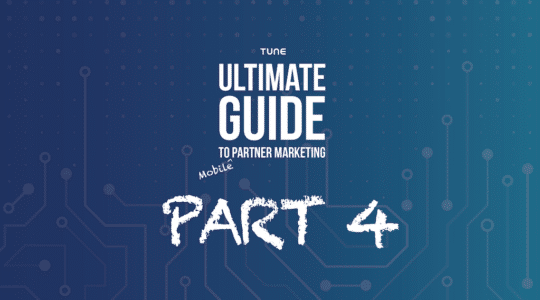
The Mobile Ad Fraud: It Takes an Ecosytem panel at #Postback18.
It might sound like the start of a joke, but it’s actually the premise behind a panel at this summer’s Postback conference.
At #Postback18, actors on both the supply and demand sides of the performance marketing ecosystem came together to discuss their experiences with advertising fraud and their strategies for fighting it. We’ve summarized the top questions and quotes for you below, brought to you by the following experts:
Moderator: Jonathan Lacoste, Co-Founder and President, Jebbit
App View: Paul Jeszenszky, VP Growth Rover.com
Agency View: Kristina Congiusta, Head of Growth Operations, TMGA
Tech View: Brian Wong, CEO of Kiip
Prefer video? Watch the recorded panel discussion below.
What are some of the challenges in the ecosystem today?
App View
Mobile and platforms are the most complicated they’ve ever been. And tracking in general has changed a lot. We can’t rely on the cookie space anymore. That’s adding a lot of opportunity for fraud.
Agency View
I think the overall challenge is that there’s no standardization. And I think that’s a general mobile problem. … But every single client of ours — and I think if we asked every single person in the room — what they would define fraud for their own company is completely different.
Tech View
We’re talking about mobile marketing in general. Sometimes in an event like this, we forget there’s also consumer brands like the Kellog’s, the General Mills, and the Cokes of the world that are also spending. What happened is the performance side of the market figured out that if someone is buying after the install, we’ll look at that number — that makes more sense, just from understanding that they’re a real person and they’re going to use the service. That doesn’t exist with a brand where you’re buying cereal off of a grocery store shelf. … So it’s almost like there’s this brand ecosystem that’s really behind.
How are apps and agencies approaching issues with tracking, ad lift, and incrementality? How about tech companies and transparency?
App View
At the end of the day, we accept there is going to be some amount of issues, whether it’s distinct fraud or whether it’s lack of incrementality. So we want to make sure that our spend and our efforts are driving positive outcome.
Agency View
Unfortunately, with a lot of our clients because fraud is so prevalent, we actually have to set aside time to identify the fraud, try to collect installs … We have clients coming up with fraud parameters and fraud metrics for us in addition to ‘Let’s be ROI-positive. Let’s push users down the funnel.’ And then it does lead into re-engagement campaigns: Are we actually collecting the right IDs for the right users? The data in everything just gets really, really muddy.
Tech View
We’re in an industry where it’s a given that something like [mobile ad fraud] is going to happen. And it’s kind of sad. We have to get to a point where we’re self-policing enough where we set these rules in place. Because obviously, when big enough money’s involved — like a Facebook — regulators are going to look at this. And we’re all going to be in even muddier waters, so to speak.
How do you think about value-based exchange and incentivizing consumers?
App View
Any marketplace that is successful, whether it’s an eBay, an Airbnb, or a Rover, has to do two things really well. One of them is increasing trust. And the other one is reducing friction. And trust is a huge piece.
Agency View
I think the change has got to come from the marketer. I think at some point, people are just going to say ‘enough is enough.’ … I know fraud is never ever going to go away, but I think us as marketers need to stop accepting that it’s there, and push for fraud to be in a five to 10 percent range.
Tech View
I think this a panel that’s less of a discussion on fraud and more about ensuring that we do continue to chase after the real, genuine consumer that we then treat well after we’ve brought them in. I think as marketers, we are that front line of defense. … You just ask [the consumer] what they want. And they’ll tell you what they want. And then you build things around that.
If you’re not actively creating solutions to proactively address these issues for your customers, you are admitting that you’re part of the problem.
What are a couple key steps marketers and their partners can take today to help fight fraud?
App View
I think the first one is make sure you set up contracts with the people you’re working with to hold them accountable. Don’t just accept the standard terms and conditions. … [Put in] specific metrics, and follow through on the quality of what you’re getting. And if they’re not hitting a certain quality threshold, then penalties. I think the second thing would be to find good partners and work closely with them, and have them working with your in-house team. … Don’t just take things off the shelf and think it’s going to magically solve your problem. You’ve got to go deeper. And then back to incrementality and testing: You’ve got to really think that through. I’ve talked to people and I’ve told them just to turn things off for a while and turn them back on — nevermind even testing — and just see what your organic traffic looks like. Some people think that’s heresy, they think that’s crazy, or they won’t take the risk, but you can’t beat that [information]. … You can’t hide from that.
Agency View
I completely agree with the contracts. A lot of our contracts will outline nine, 12, 15 different types of fraud that we just won’t pay for, even goes into rebrokering … Essentially, I know it doesn’t solve the standardization time that I’m longing for, but it does hold your partners accountable for what your company considers fraudulent so you’re not paying for it. I think digging into your own data, work with your BI team to figure out what’s going on. Sadly, if it looks too good to be true, then it probably is too good to be true.
Tech View
Align incentives. Make sure that in the beginning it’s set up in a way that isn’t encouraging bad activity because sometimes you just don’t even realize it, but it is. Honestly, look to areas of the world where [fraudulent activity and personally information gathering] is even more intense and try to get ahead of it, like Asia, for example. … And this is kind of funny, but kind of a real thing: Think like Jack Bauer. How epically sketchy can people be? As long as you can put yourself in that mindset, you can start to be skeptical and question everything, and then learn to take a healthy amount of skepticism, but still take risks, work with new partners, and then push the industry forward.
Learn More
In today’s fraud-fraught ecosystem, marketing risks are no joke. Ready to get serious? Visit hasoffers.com to learn how to capitalize on the most important aspects of your performance marketing strategies and partnerships.
Author
Becky is the Senior Content Marketing Manager at TUNE. Before TUNE, she handled content strategy and marketing communications at several tech startups in the Bay Area. Becky received her bachelor's degree in English from Wake Forest University. After a decade in San Francisco and Seattle, she has returned home to Charleston, SC, where you can find her strolling through Hampton Park with her pup and enjoying the simple things between adventures with friends and family.




Leave a Reply
You must be logged in to post a comment.